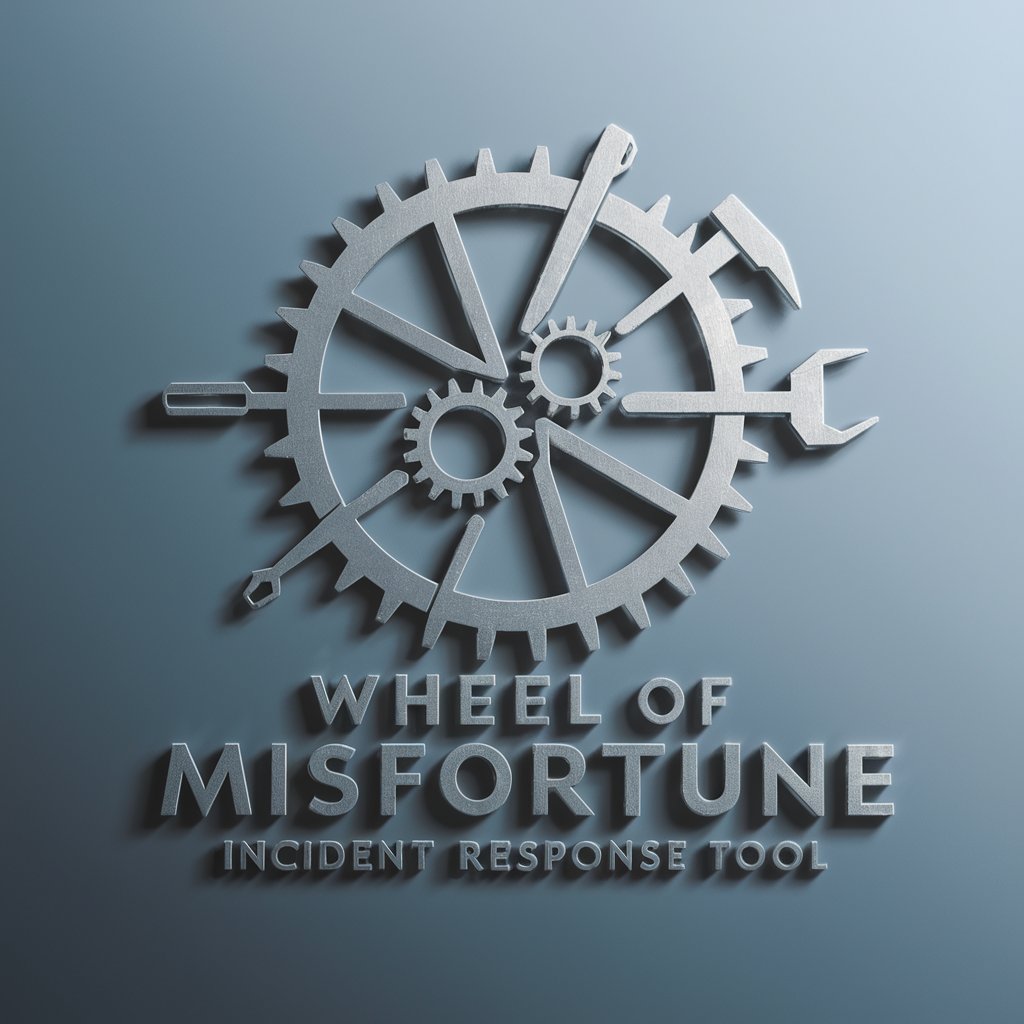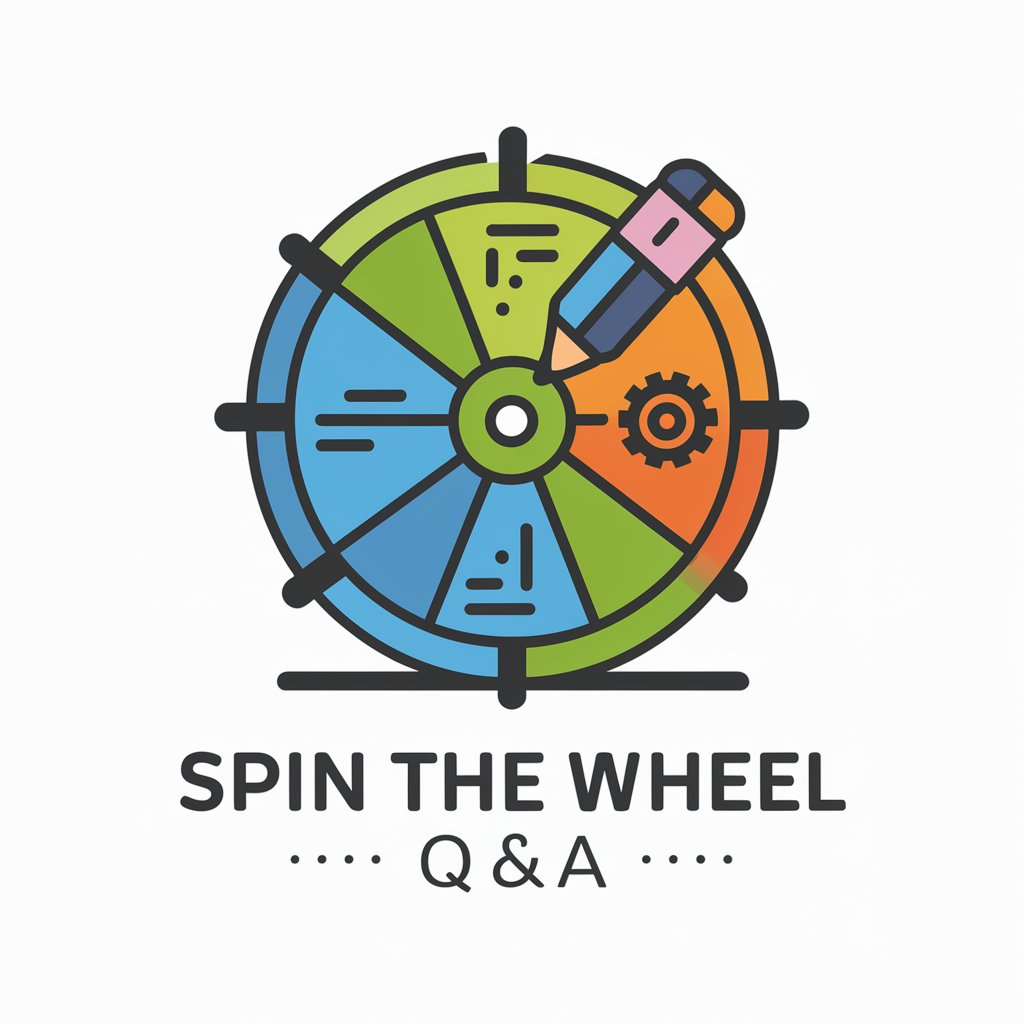
Wheel of Misfortune - Real-World Incident Training

Welcome to the Wheel of Misfortune SRE training.
Simulate. Resolve. Learn. The AI-powered incident training tool.
Simulate an outage scenario where engineers need to...
Create a scenario that tests the team's ability to handle...
Develop a training exercise focused on debugging...
Construct a realistic incident involving...
Get Embed Code
Introduction to Wheel of Misfortune
The Wheel of Misfortune is a training tool designed for Site Reliability Engineering (SRE) teams to simulate outage scenarios. Its primary function is to improve the problem-solving skills of on-call engineers by providing them with real-world, hands-on incident response training. Through role-playing, engineers face simulated technical issues, encouraging them to practice debugging and resolving problems under stress, similar to what they would experience in their actual work environment. For example, in a scenario named 'The Disappearing Data Dilemma,' an engineer might receive alerts about sudden spikes in user complaints regarding data retrieval issues, requiring them to investigate and address the root cause without specific guidance on the infrastructure anomalies. Powered by ChatGPT-4o。

Main Functions of Wheel of Misfortune
Simulation of Outage Scenarios
Example
Engineers participate in a simulation where they troubleshoot a sudden service downtime caused by an expired certificate in a Kubernetes cluster, as seen in the 'Unexpected Service Downtime' scenario.
Scenario
This function is crucial for preparing engineers to handle unexpected issues by providing them with a realistic, pressure-filled environment to test their ability to analyze, communicate, and resolve incidents.
Role-Playing and Reenactment
Example
Teams reenact a past incident where a misconfiguration in load balancers led to website outages, allowing engineers to understand the importance of thorough testing and configuration verification.
Scenario
Role-playing facilitates understanding of different roles within an incident response team, such as Incident Commander and Operations Lead, enhancing team coordination and communication during real incidents.
Practice Under Stress
Example
During the 'Midnight Mayhem at MedTech' scenario, engineers work against the clock to resolve erratic CPU usage spikes, mimicking the stress of real on-call situations.
Scenario
This function helps engineers build resilience and adaptability, ensuring they remain calm and effective even when faced with high-pressure situations.
Ideal Users of Wheel of Misfortune Services
Site Reliability Engineers
SREs are the primary users, as the tool is specifically designed to enhance their skills in incident response, troubleshooting, and system recovery. SRE teams benefit by gaining hands-on experience with realistic outage scenarios, improving their readiness for actual on-call duties.
DevOps Teams
DevOps practitioners focused on improving the reliability and performance of software delivery and infrastructure changes can also benefit. Wheel of Misfortune helps them understand the implications of system changes and the importance of effective incident response protocols.
IT Operations Staff
IT Operations teams responsible for maintaining the uptime and performance of IT services can use Wheel of Misfortune to simulate infrastructure failures and security breaches, gaining valuable insights into system vulnerabilities and recovery strategies.

How to Use Wheel of Misfortune
Start with YesChat.ai
For an initial experience without any commitment, head to yeschat.ai, where you can try Wheel of Misfortune for free. No login or ChatGPT Plus subscription is required.
Identify Your Learning Objectives
Determine what you want to achieve with the Wheel of Misfortune. Are you aiming to improve your incident response skills, enhance team communication, or simulate specific scenarios for training purposes?
Choose a Scenario
Select a scenario that aligns with your objectives. Each scenario offers a unique set of challenges designed to test and improve different aspects of your problem-solving and communication skills.
Engage with the Scenario
Actively participate in the scenario by taking on roles, making decisions, and communicating with team members. Apply the incident response protocols and tools provided to navigate through the situation.
Reflect and Learn
After completing the scenario, engage in a post-scenario analysis to reflect on your decisions, actions, and the overall process. Use feedback to identify areas of strength and opportunities for improvement.
Try other advanced and practical GPTs
Wheel Whiz
Master the Road with AI-Powered Prep

Future Fortune Wheel
Insightful Fortunes, AI-Powered

Color Wheel Generator
AI-powered Color Design Simplified

Emotion Wheel For Adults
Navigate Emotions with AI-Powered Insight

Pottery Wheel
Transforming ideas into digital pottery.

Feelings Wheel
Navigate emotions with AI precision.

影视作品分析专家
Deepening Your Understanding with AI

hanaki 商品レビューマスター
Empower Your Choices with AI-Driven Reviews

Jewelry
Empowering Jewelry Creativity with AI

Gaudish Gems and Jewelry Store
Unveiling the Brilliance of AI in Jewelry

AI in Custom Jewelry Design GPT
Craft Your Vision with AI-Powered Jewelry Design

Jewelry GPT
Empowering Jewelry Enthusiasts with AI

Wheel of Misfortune FAQs
What is Wheel of Misfortune?
Wheel of Misfortune is a simulation-based training tool designed for Site Reliability Engineering (SRE) teams. It replicates real-world outage scenarios to improve problem-solving and communication skills under pressure.
Who can benefit from using Wheel of Misfortune?
SRE teams, IT support staff, and anyone involved in incident response operations will find Wheel of Misfortune particularly beneficial. It's also useful for managers looking to enhance their team's operational readiness.
How does Wheel of Misfortune simulate real-world scenarios?
It uses detailed scenarios based on common industry challenges, allowing participants to role-play through incidents, make decisions, and apply incident management protocols, thus mimicking real-world pressures.
Can Wheel of Misfortune adapt to different skill levels?
Yes, the tool is designed to accommodate a range of skill levels, from beginners to experienced professionals. Scenarios vary in complexity and can be selected based on the team's expertise and training needs.
Is there a way to measure improvement using Wheel of Misfortune?
Improvement is gauged through post-scenario analysis and feedback sessions, where participants can review their performance, decision-making processes, and adherence to incident response protocols.





